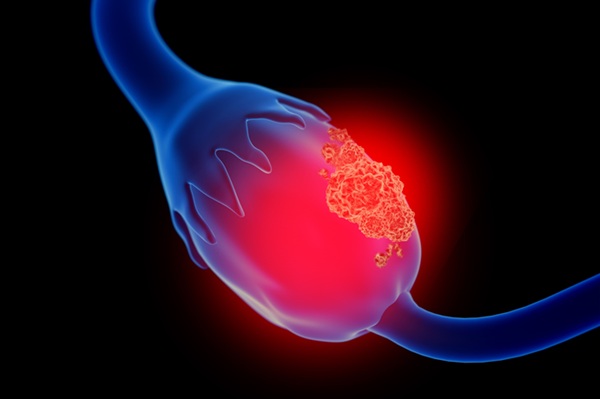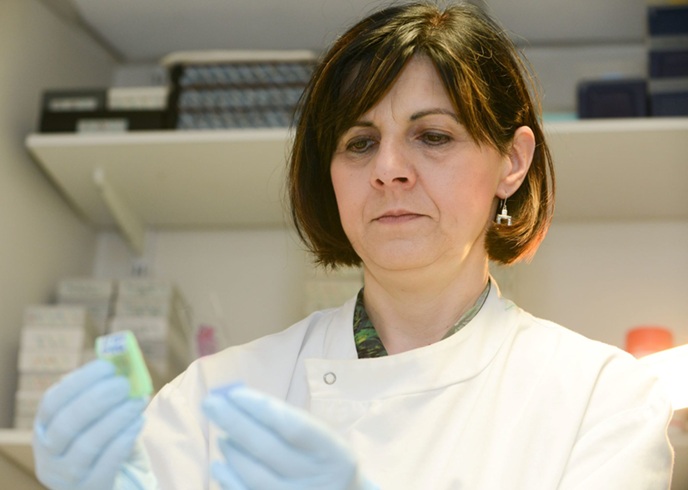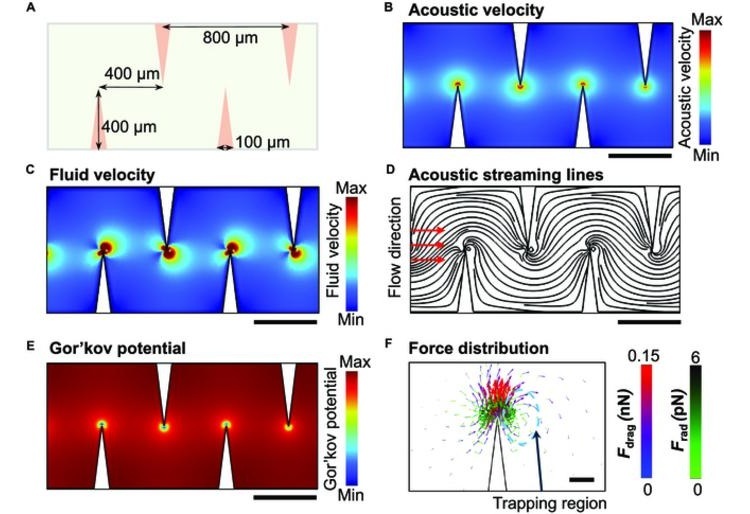Lymphocytic Infiltration Explored as Biomarker for Stable Colorectal Tumors
|
By LabMedica International staff writers Posted on 15 Oct 2020 |
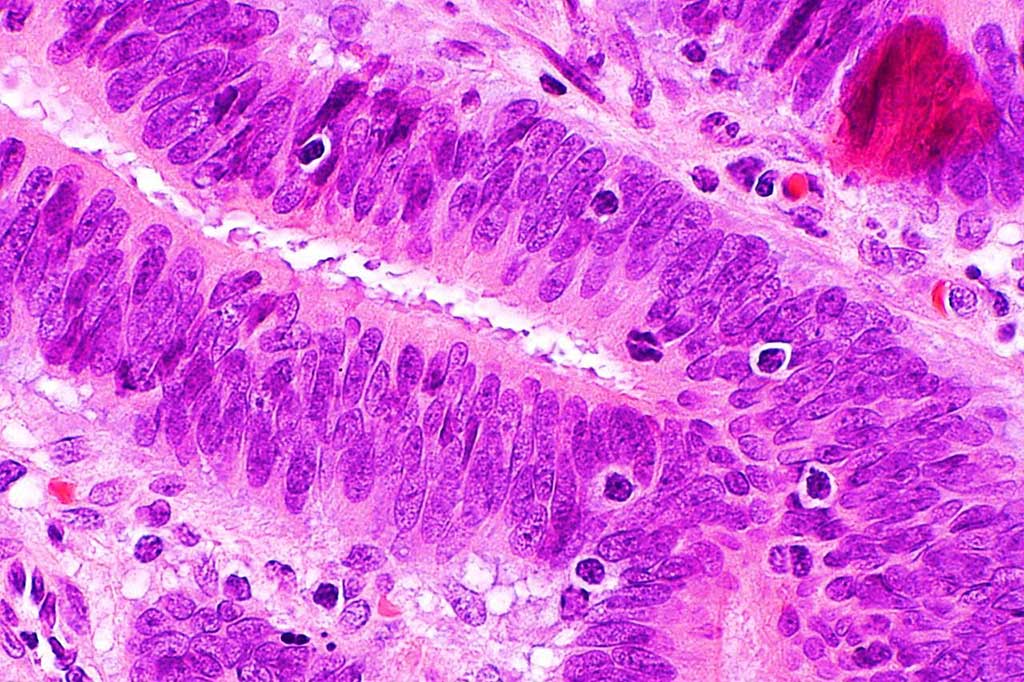
Image: Photomicrograph showing tumor-infiltrating lymphocytes in colorectal carcinoma which are suggestive of microsatellite instability (Photo courtesy of Nephron)
Identifying stage II patients with colorectal cancer (CRC) at higher risk of progression is a clinical priority in order to optimize the advantages of adjuvant chemotherapy while avoiding unnecessary toxicity. A remarkable feature of CRC is the difference in prognosis of patients diagnosed at early versus late stages of the disease.
Immune cells clearly play an important role in tumorigenesis, because evasion of immune surveillance and/or suppression of immune system have been described as a hallmark of cancer cells. In addition, it is well-known that tumor-immune interactions offer important prognostic information for some cancer patients.
An international team of scientists collaborating with the University of Barcelona (Barcelona, Spain) assessed the usefulness of measures of T-cell infiltration as prognostic biomarkers in 640 stage II, CRC tumors, 582 of them confirmed microsatellite stable. The team measured both the quantity and clonality index of T cells by means of T-cell receptor (TCR) immunosequencing in a discovery dataset (95 patients with colon cancer diagnosed at stage II and microsatellite stable, median age 67, 30% women) and replicated the results in three additional series of stage II patients from two countries.
All samples in the datasets were analyzed by immunosequencing. A multiplex polymerase chain reaction (PCR) system was used to amplify the variable CDR3β sequences of the TCR from DNA segments in seven gene families, 10 orphan segments in 10 gene families, both D genes and the 13 functional J segments. This approach generated an 87 base-pair fragment capable of identifying the VDJ region spanning each unique CDR3β. Then, amplicons were sequenced using the HiSeq platform (Illumina, San Diego, CA, USA).
In addition to immunosequencing, lymphocytic infiltration for the series was analyzed by hematoxylin and eosin (HE) stained histological slides used for diagnosis. The tumor samples from the discovery series were examined by two pathologists and scored for stroma and lymphocyte abundance. Three histological variables were studied: stromal lymphocytes (STLs), tumor-infiltrating lymphocytes (TILs), and the proportion of stroma/tumor. To analyze STLs, the pathologist evaluated five histological regions at a high-powered field (HPF, × 400) measuring the percentage of lymphocytes and plasmatic cells (excluding polymorphonuclear neutrophils) in relation to the surrounding stroma of the tumor.
The scientists reported that there was prognostic value of TCR abundance and clonality discovered in a retrospective study of 95 stage II colon patients. These results were replicated in two additional retrospective studies from Spain (N = 112 and 163), and other from Israel (N = 270). Results were confirmed both when fresh frozen and paraffin-embedded tissue were analyzed by immune-sequencing. High TCR abundance and low clonality index (more diverse repertoire) were associated with better prognosis. Though partially correlated, both provide complementary prognostic information.
The authors concluded that tumor lymphocyte assessment by TCR immunosequencing technique, which combines information about abundance and clonality, is an independent prognostic biomarker in stage II microsatellite stable tumors. The study was published on September 24 2020 in the journal PLOS Medicine.
Related Links:
University of Barcelona
Illumina
Immune cells clearly play an important role in tumorigenesis, because evasion of immune surveillance and/or suppression of immune system have been described as a hallmark of cancer cells. In addition, it is well-known that tumor-immune interactions offer important prognostic information for some cancer patients.
An international team of scientists collaborating with the University of Barcelona (Barcelona, Spain) assessed the usefulness of measures of T-cell infiltration as prognostic biomarkers in 640 stage II, CRC tumors, 582 of them confirmed microsatellite stable. The team measured both the quantity and clonality index of T cells by means of T-cell receptor (TCR) immunosequencing in a discovery dataset (95 patients with colon cancer diagnosed at stage II and microsatellite stable, median age 67, 30% women) and replicated the results in three additional series of stage II patients from two countries.
All samples in the datasets were analyzed by immunosequencing. A multiplex polymerase chain reaction (PCR) system was used to amplify the variable CDR3β sequences of the TCR from DNA segments in seven gene families, 10 orphan segments in 10 gene families, both D genes and the 13 functional J segments. This approach generated an 87 base-pair fragment capable of identifying the VDJ region spanning each unique CDR3β. Then, amplicons were sequenced using the HiSeq platform (Illumina, San Diego, CA, USA).
In addition to immunosequencing, lymphocytic infiltration for the series was analyzed by hematoxylin and eosin (HE) stained histological slides used for diagnosis. The tumor samples from the discovery series were examined by two pathologists and scored for stroma and lymphocyte abundance. Three histological variables were studied: stromal lymphocytes (STLs), tumor-infiltrating lymphocytes (TILs), and the proportion of stroma/tumor. To analyze STLs, the pathologist evaluated five histological regions at a high-powered field (HPF, × 400) measuring the percentage of lymphocytes and plasmatic cells (excluding polymorphonuclear neutrophils) in relation to the surrounding stroma of the tumor.
The scientists reported that there was prognostic value of TCR abundance and clonality discovered in a retrospective study of 95 stage II colon patients. These results were replicated in two additional retrospective studies from Spain (N = 112 and 163), and other from Israel (N = 270). Results were confirmed both when fresh frozen and paraffin-embedded tissue were analyzed by immune-sequencing. High TCR abundance and low clonality index (more diverse repertoire) were associated with better prognosis. Though partially correlated, both provide complementary prognostic information.
The authors concluded that tumor lymphocyte assessment by TCR immunosequencing technique, which combines information about abundance and clonality, is an independent prognostic biomarker in stage II microsatellite stable tumors. The study was published on September 24 2020 in the journal PLOS Medicine.
Related Links:
University of Barcelona
Illumina
Latest Pathology News
- New Molecular Analysis Tool to Improve Disease Diagnosis
- Tears Offer Noninvasive Alternative for Diagnosing Neurodegenerative Diseases
- AI-Powered Method Combines Blood Data to Accurately Measure Biological Age
- AI Tool Detects Cancer in Blood Samples In 10 Minutes
- AI Pathology Analysis System Delivers Comprehensive Cancer Diagnosis
- AI Improves Cervical Cancer Screening in Low-Resource Settings
- New Multi-Omics Tool Illuminates Cancer Progression
- New Technique Detects Genetic Mutations in Brain Tumors During Surgery within 25 Minutes
- New Imaging Tech to Improve Diagnosis and Treatment of Skin Cancers
- Serially Testing Brain Tumor Samples Reveals Treatment Response in Glioblastoma Patients
- High-Accuracy Tumor Detection Method Offers Real-Time Surgical Guidance
- AI Tool Detects Hidden Warning Signs of Disease Inside Single Cells
- Automated Tool Detects Early Warning Signs of Breast Cancer
- New Software Tool Improves Analysis of Complex Spatial Data from Tissues
- AI Tool Helps Surgeons Distinguish Aggressive Glioblastoma from Other Brain Cancers in Real-Time
- New Tool Could Revolutionize Acute Leukemia Diagnosis
Channels
Clinical Chemistry
view channel
VOCs Show Promise for Early Multi-Cancer Detection
Early cancer detection is critical to improving survival rates, but most current screening methods focus on individual cancer types and often involve invasive procedures. This makes it difficult to identify... Read more
Portable Raman Spectroscopy Offers Cost-Effective Kidney Disease Diagnosis at POC
Kidney disease is typically diagnosed through blood or urine tests, often when patients present with symptoms such as blood in urine, shortness of breath, or weight loss. While these tests are common,... Read moreMolecular Diagnostics
view channel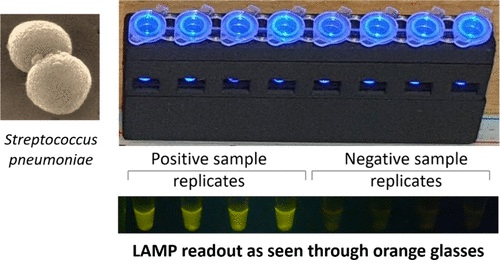
New Diagnostic Method Detects Pneumonia at POC in Low-Resource Settings
Pneumonia continues to be one of the leading causes of death in low- and middle-income countries, where limited access to advanced laboratory infrastructure hampers early and accurate diagnosis.... Read more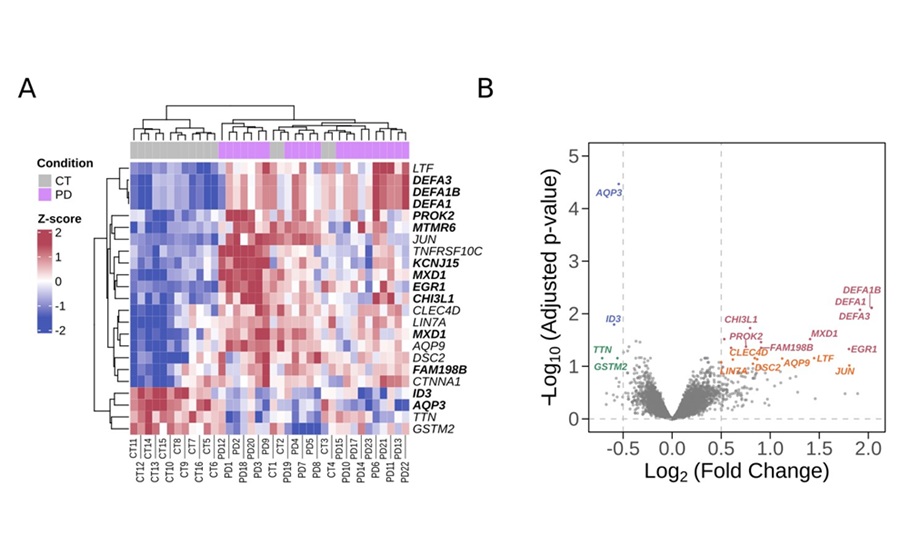
Blood Immune Cell Analysis Detects Parkinson’s Before Symptoms Appear
Early diagnosis of Parkinson’s disease remains one of the greatest challenges in neurology. The condition, which affects nearly 12 million people globally, is typically identified only after significant... Read moreHematology
view channel
ADLM’s New Coagulation Testing Guidance to Improve Care for Patients on Blood Thinners
Direct oral anticoagulants (DOACs) are one of the most common types of blood thinners. Patients take them to prevent a host of complications that could arise from blood clotting, including stroke, deep... Read more
Viscoelastic Testing Could Improve Treatment of Maternal Hemorrhage
Postpartum hemorrhage, severe bleeding after childbirth, remains one of the leading causes of maternal mortality worldwide, yet many of these deaths are preventable. Standard care can be hindered by delays... Read more
Pioneering Model Measures Radiation Exposure in Blood for Precise Cancer Treatments
Scientists have long focused on protecting organs near tumors during radiotherapy, but blood — a vital, circulating tissue — has largely been excluded from dose calculations. Each blood cell passing through... Read moreImmunology
view channel
Blood-Based Liquid Biopsy Model Analyzes Immunotherapy Effectiveness
Immunotherapy has revolutionized cancer care by harnessing the immune system to fight tumors, yet predicting who will benefit remains a major challenge. Many patients undergo costly and taxing treatment... Read more
Signature Genes Predict T-Cell Expansion in Cancer Immunotherapy
Modern cancer immunotherapies rely on the ability of CD8⁺ T cells to rapidly multiply within tumors, generating the immune force needed to eliminate cancer cells. However, the biological triggers behind... Read moreMicrobiology
view channel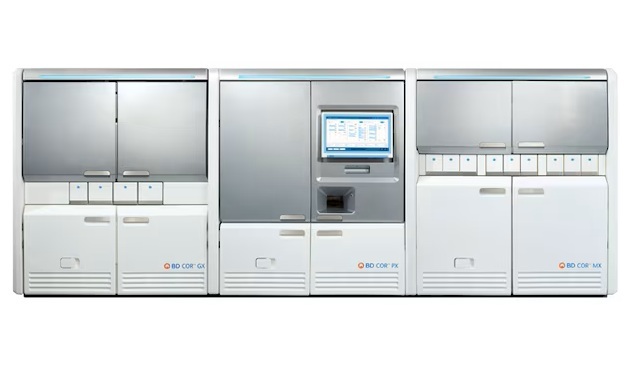
High-Throughput Enteric Panels Detect Multiple GI Bacterial Infections from Single Stool Swab Sample
Gastrointestinal (GI) infections are among the most common causes of illness worldwide, leading to over 1.7 million deaths annually and placing a heavy burden on healthcare systems. Conventional diagnostic... Read more
Fast Noninvasive Bedside Test Uses Sugar Fingerprint to Detect Fungal Infections
Candida bloodstream infections are a growing global health threat, causing an estimated 6 million cases and 3.8 million deaths annually. Hospitals are particularly vulnerable, as weakened patients after... Read moreTechnology
view channel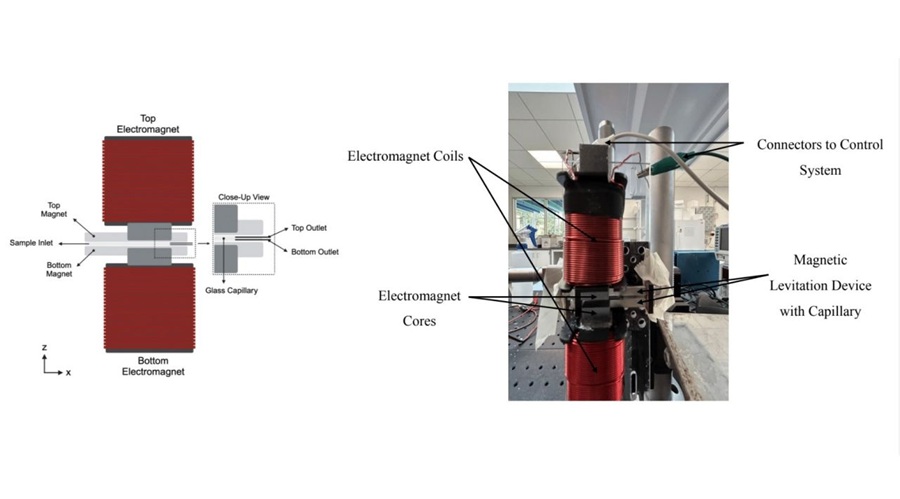
Cell-Sorting Device Uses Electromagnetic Levitation to Precisely Direct Cell Movement
Sorting different cell types—such as cancerous versus healthy or live versus dead cells—is a critical task in biology and medicine. However, conventional methods often require labeling, chemical exposure,... Read more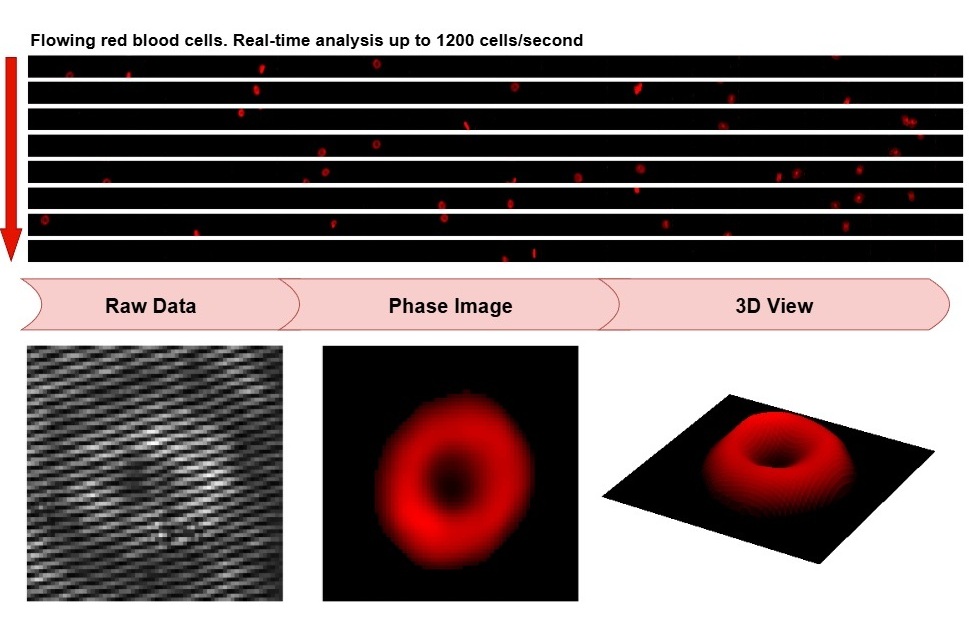
Embedded GPU Platform Enables Rapid Blood Profiling for POC Diagnostics
Blood tests remain a cornerstone of medical diagnostics, but traditional imaging and analysis methods can be slow, costly, and reliant on dyes or contrast agents. Now, scientists have developed a real-time,... Read moreIndustry
view channel
Qiagen Acquires Single-Cell Omics Firm Parse Biosciences
QIAGEN (Venlo, Netherlands) has entered into a definitive agreement to fully acquire Parse Biosciences (Seattle, WA, USA), a provider of scalable, instrument-free solutions for single-cell research.... Read more
Puritan Medical Products Showcasing Innovation at AMP2025 in Boston
Puritan Medical Products (Guilford, ME, USA), the world’s most trusted manufacturer of swabs and specimen collection devices, is set to exhibit at AMP2025 in Boston, Massachusetts, from November 11–15.... Read more
Advanced Instruments Merged Under Nova Biomedical Name
Advanced Instruments (Norwood, MA, USA) and Nova Biomedical (Waltham, MA, USA) are now officially doing business under a single, unified brand. This transformation is expected to deliver greater value... Read more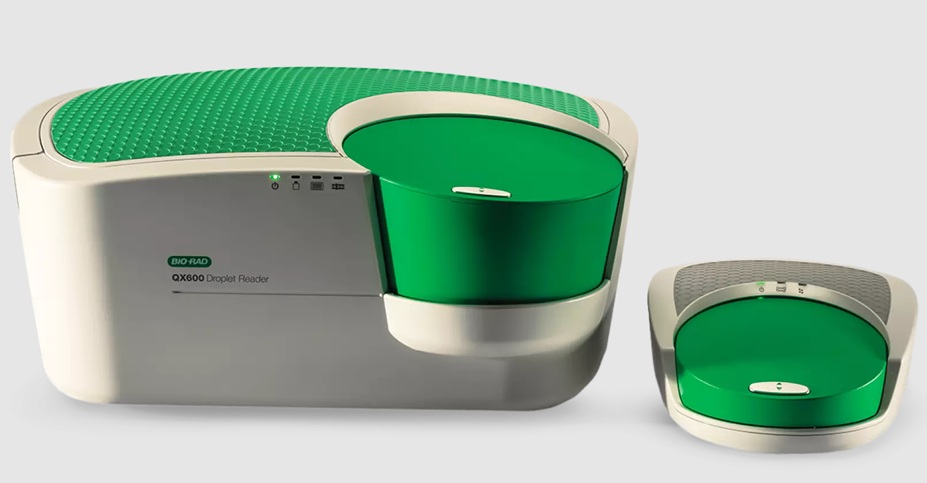









 assay.jpg)



